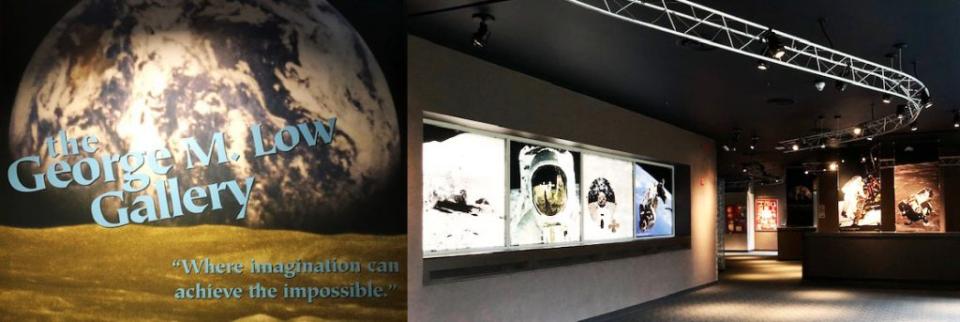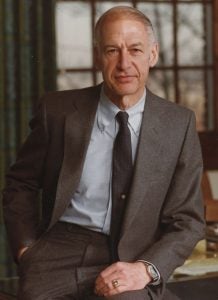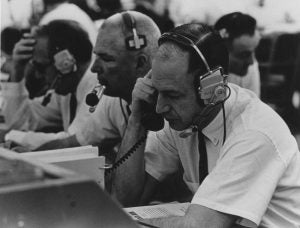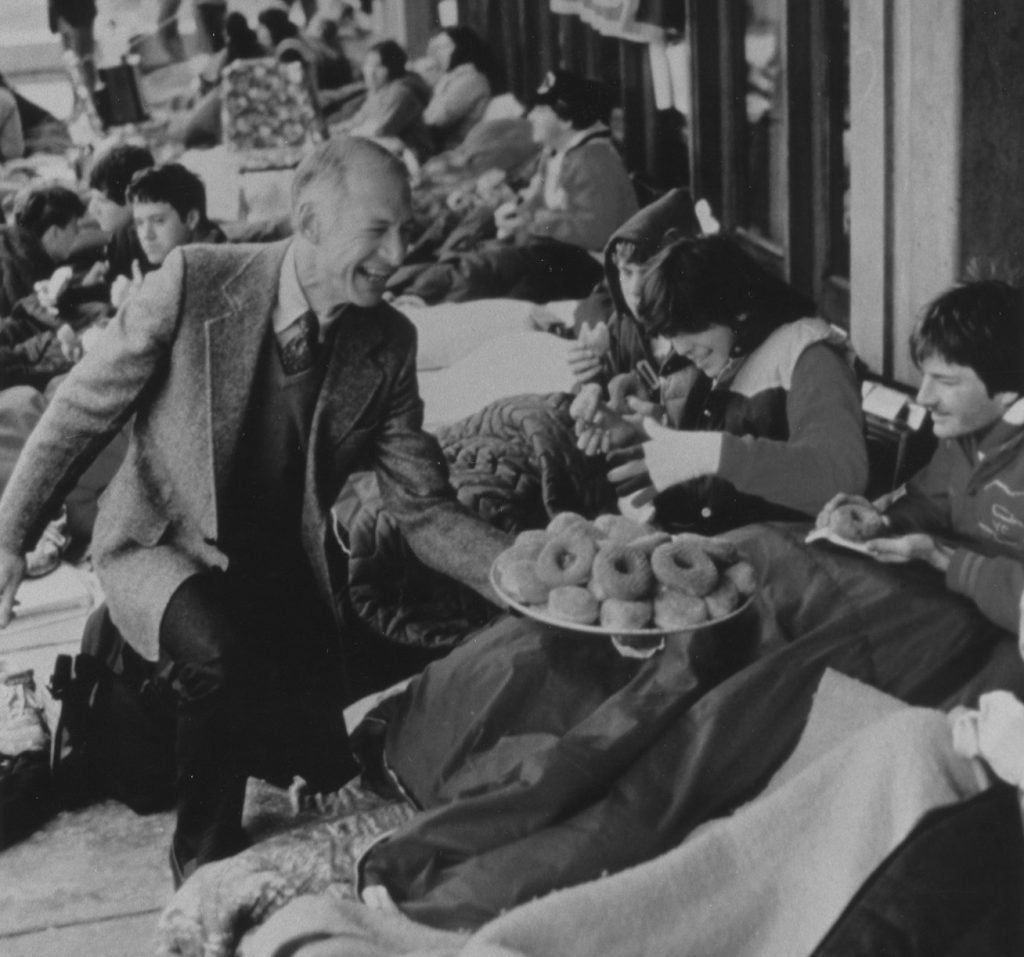
The Jetsons, model rockets, words like “liftoff” and “launch,” Star Trek, the Houston Astros…they all have something in common: after 1961, they helped mold pop culture. America had entered the space age, and entertainment, language, fashion, and architecture would never be the same. Nothing, however, ignited America’s fascination with space more than the summer afternoon of July 20th, 1969. On that day, 53 million Americans watched as two men, Neil Armstrong and Buzz Aldrin, became the first humans to walk on the moon.
“Houston, Tranquility Base here. The Eagle has landed.” – Neil Armstrong, 4:18 p.m.
Perhaps you remember growing up and learning about this important event in school. Perhaps you remember watching it live on TV. Are you aware, however, that one of the men who was instrumental in the Apollo missions is none other than George M. Low, ’48, Rensselaer’s president from 1976 to 1984?
Born in Vienna in 1926, Low emigrated to the United States with his family in 1940. After serving in the army during WWII he attended Rensselaer, where he received Bachelor’s and Master’s degrees in aeronautical engineering. After graduating, he joined the National Advisory Committee for Aeronautics (NACA) as a Research Scientist at the Lewis Flight Propulsion Laboratory in Ohio, where he specialized in experimental and theoretical research in heat transfer, boundary layer flows, and internal aerodynamics. In addition, he also worked on space technology problems, such as orbit calculations, reentry paths, and space rendezvous techniques.
After NASA was formed in October of 1958, Low transferred to the agency’s headquarters in Washington, DC. He served as Chief of Manned Space Flight, and was closely involved in the planning of the Mercury, Gemini, and Apollo projects. Low assembled the Manned Lunar Landing Task Group in 1960, which researched the technical and planning requirements behind a manned lunar landing, and in 1961, he helped prepare the memorandum for President Kennedy which stated that America had the capability to put astronauts on the moon.
Low quickly moved through the ranks at NASA, being named Assistant Director of Manned Space Flight in June of 1961. Two years later, he was named the Deputy Director of the Office of Manned Space Flight, where he worked on spacecraft development, launch vehicles, and space medicine programs. Low then transferred to NASA’s Manned Spacecraft Center in Houston, TX, in 1964. In this role, he was given overall responsibility of the Gemini and Apollo space programs, as well as future program planning and development.
After the disastrous Apollo 1 fire that killed three astronauts in 1967, Low was appointed the Manager of the Apollo Spacecraft Program. He oversaw the complete redesign and retesting of Apollo, where he added more rigorous quality control to strengthen safety operations and procedures. Low immersed himself in the work, making sure that even minor flaws were improved upon. George Abbey, Low’s technical assistant, once said of Low, “he was at work long before most people in the morning, and long after they left at night.”
Aside from revamping Apollo, Low also testified before Congress on budget requests and schedules. During the summer of 1968, Low realized that they were behind schedule on a moon landing, which was a realization the competitive Low didn’t take lightly. In response, Low proposed the idea of a moon orbit instead, which would later be called “a stroke of genius.” Sending Apollo 8 up to circumnavigate the moon gave America the time it needed to figure out how to safely land a man on the moon, and all but squashed Russia’s moon landing efforts.
Finally, in 1969, NASA was ready to send astronauts to the moon. A two hour, thirty six minute moonwalk was televised to millions of Americans from a camera that was attached to the Apollo 11 lander, marking it as one of the biggest national events in American history. Though Low received many honors and credits for the Apollo project, he was little known to the public. He once remarked, “My job was never as exciting as what the astronauts ate for breakfast.”
Rensselaer fondly remembers George Low. During his eight years as president, he developed the Rensselaer 2000 planning guide, broadened new areas for technology research, and undertook many fundraising activities. One of his signature gestures, however, was serving donuts to students in the hockey line, an act which he enjoyed greatly.
After his death in 1984, his family donated Low’s NASA artifacts and memorabilia to Rensselaer, which were installed in the Low exhibit gallery on the fourth floor of the George M. Low Center for Industrial Innovation (CII).
This year, take a stroll through the gallery to commemorate the history behind the 50 year anniversary of the Apollo 11 landing!






Comments
In 1976, shortly after George Low arrived on campus, one of my apartment mates in Styckwyck, 86 Albright Court, invited him to our apartment for pizza. We were proud of making our own pizza using a Joy of Cooking recipe for fast-rising bread for the crust. To our surprise, he accepted. We spent a day or two cleaning the apartment, getting ready. We also didn’t share the planned visit with others.
George Low was gracious and engaging, although I can’t remember many other details of the evening. I remained on campus, in graduate school, and attended his memorial service in 1984. George Low cannot be replaced in my mind and I hope that of my apartment mates: David Brindisi, Chuck Brotman, and Alan Finn (all ’77).
In reply to In 1976, shortly after… by egglel
What a nice story about George Low. Thanks for sharing Ted!
Great story, Kelsey!
In reply to Great story, Kelsey! by egglel
Thank you!